Conservation of ‘London Bridge’ by Daniel Turner
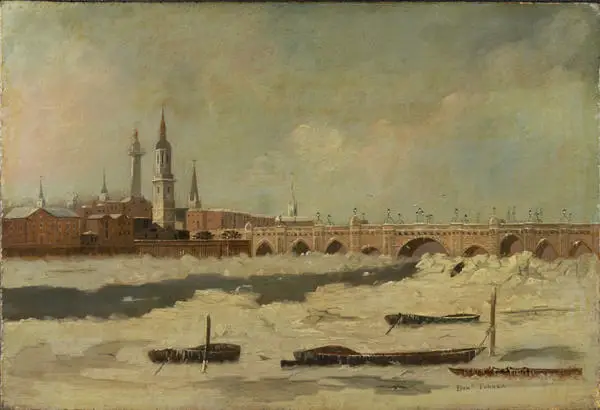
The conservation treatment of 'London Bridge' c.1795, by Daniel Turner, was carried out in 2019 by Alexandra Lawson, during her postgraduate internship. This small painting on panel, measuring only 22 x 32cm, was chosen for treatment because removal of the disfiguring discoloured varnish layer would significantly improve the appearance of the painting and return it to a displayable condition.
Researching the painting
The painting shows Old London Bridge sometime after the 1759, when repairs had been carried out and the buildings that used to sit upon it (including the famous Traitor’s Gate) had been removed. In the 1760s the central arch was widened in an attempt to provide a safer passage for larger vessels. The painting is signed by Turner but it is not dated. We know that the Thames froze on several occasions in the 18th century, this coupled with the inclusion of certain buildings and architectural modifications suggest a date of the winter of 1795/6. The whole bridge was eventually demolished and the current London Bridge was opened in 1832.
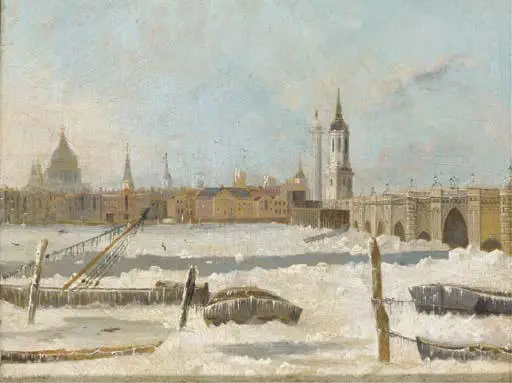
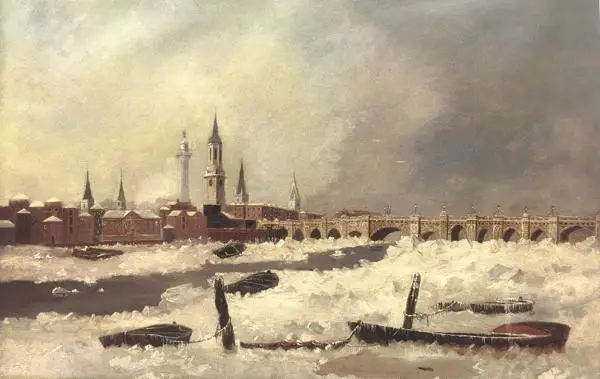
Daniel Turner’s artistic career spanned approximately from 1782-1828. He was one of many artists at the time that specialised in painting London scenes, and he focused on views of the River Thames. He painted London Bridge many times, and research found two more small panels of the same snowy scene that are probably contemporary with the Guildhall Art Gallery’s painting. In all of these paintings the bridge is shown with the river still flowing through the central arch with ice piled up on either side blocking the narrower arches. However, there are subtle differences in the composition of each painting as the artist’s viewpoint moves along the south bank of the Thames.
Cleaning
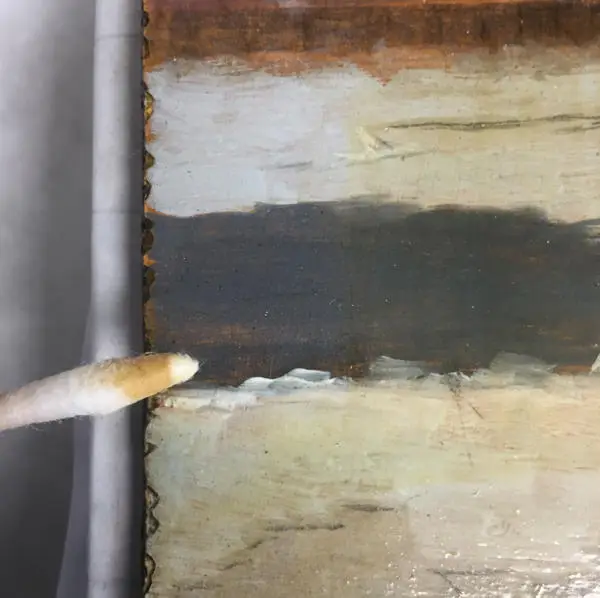
After surface dirt had been removed from the front and back of the panel, tests for an appropriate method of varnish removal began. This varnish was not the original varnish applied by the artist, according to our records it probably dated from the 1950s. The varnish was made from a natural resin, which darkens dramatically over time. In this case, it was a thick yellow layer that completely shifted the tone of what should have been a bright, cool and crisp winter’s day.
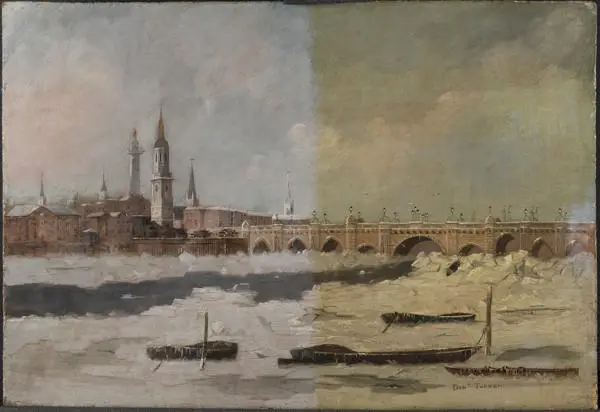
The varnish was removed with a combination of methods, depending on the area of the painting. The areas of sky and snow were safe to be cleaned with cotton swabs wetted with solvent, whereas the more vulnerable brown coloured passages were cleaned using an aqueous gel system. This allowed a more controlled application of the cleaning agent that could be carefully timed.
Infrared Examination
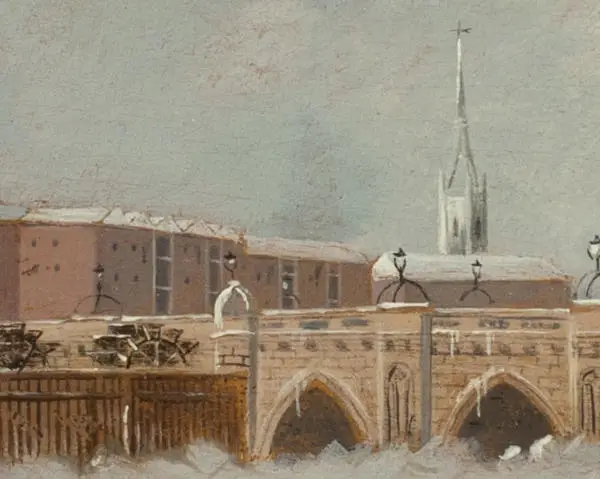
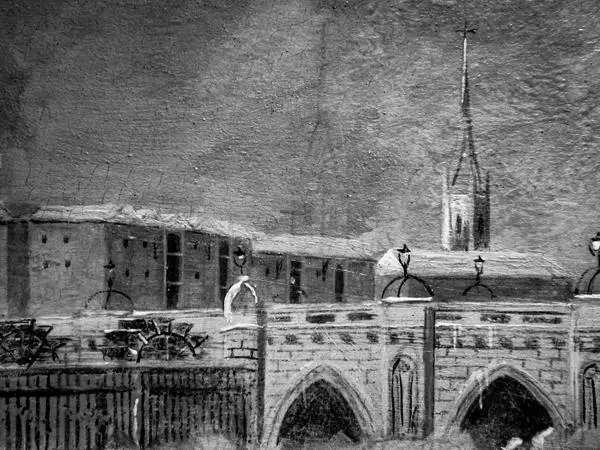
During treatment it was possible to learn more about how the painting had been made. A triangular shape to the left of St. Magnus Church’s steeple is just visible in normal light, but by taking a photograph with an infrared adapted camera, it was possible to record more information not detectable by the human eye. Infrared light is able to penetrate upper layers of paint to reveal carbon-based drawing beneath. The infrared image shows us that Turner had originally placed the steeple to the left of its final position. He had drawn this first outline of the steeple carefully and, although a little larger, it appears close in design to the final steeple. It seems he changed his mind about its position during the painting process.
Varnishing and retouching
Once the final area of the discoloured varnish had been removed, the painting was ready for a new varnish, applied by brush. A synthetic varnish was used, as it will not discolour and will remain reversible in solvents that are safe for the original paint. The paint has remained in remarkably good condition, despite its age. Very minor retouching was carried out using dry pigments in a synthetic varnish medium, so that it can be readily and safely removed with the varnish in future if necessary.
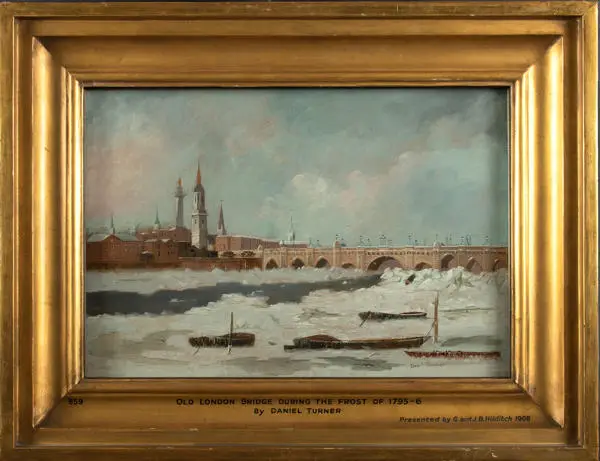
After conservation treatment the bright reflections from the frozen river and the subtle pink and purple hues in the sky are fully visible, the frozen beauty of this remarkably rare occurrence in the Thames’ history has been revealed once again. The painting is currently on display in the London Gallery.